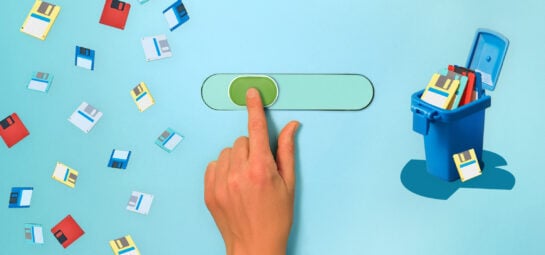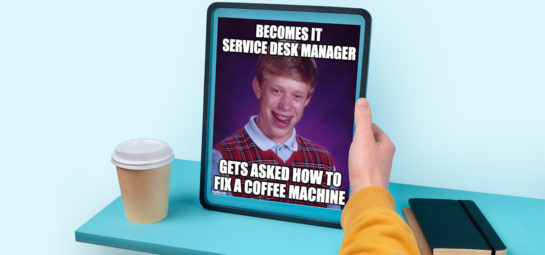Top IT SLA Tips to Enhance Your Service Desk

If you provide a service or product, you have a responsibility to your customers. And what better way to fulfil this responsibility than by creating clear IT Service Level Agreements (SLAs)?
What are IT Service Level Agreements (SLAs)?
IT Service Level Agreements define the level of service between a vendor and a customer. They detail things such as responsibilities, availability, resolution or response time, and so on.
For example, a vendor may choose to include an SLA stating that they will be available 24/7 for the customer.
Why are SLAs important in IT?
SLAs not only help you set and manage customer expectations, but they also ensure legal protection on both sides. The agreements do this by defining which circumstances each organization is or isn’t liable for if issues arise. By clearly outlining these agreements, you’ll have peace of mind and keep customers happy at the same time.
Some key components of good IT SLAs include:
- Scope
- Objectives
- Roles and responsibilities
- Key metrics
- Escalation procedures
Where to start with IT SLAs
How can you make sure your SLAs are solid? To start with, make sure that all parties understand the purpose of the SLAs that you create. Not only that, but the SLAs should actually align with what is most important for the customer (and you). Sounds obvious, right? True, but a lot of organizations are guilty of setting SLAs without asking the customer what they really need.
By following IT SLA best practices, you’ll make sure you get started on the right foot!
Common IT SLA challenges
So, what makes IT SLAs challenging?
Tracking: IT managers often have a hard time defining SLA metrics and measuring performance. It involves a lot of manual work, such as extracting raw data, building custom reports, etc.
Lack of flexibility: SLA reports are often not detailed enough to account for the reason why you did or didn’t meet the agreement.
Keeping SLAs updated: This can sometimes be difficult, however by not periodically reviewing your SLAs, you may be dragging outdated agreements along with you. If your organization, industry, or other circumstances are changing, so should your SLAs.
Establishing a balance. With SLAs, it’s always best to have a ‘less is more’ approach, rather than trying to control as much as possible. This type of control will lead to a lot of lost time tracking and maintaining the agreements. Having a balance that protects and makes both sides happy, while not being excessive, is the key.
Take your SLAs one step further
While SLAs in ITSM are great for many things, relying on them too heavily will risk long-term damage to your organization. You simply get blinded by numbers and forget about the service. We see this too often. The solution? A shift from IT SLAs towards XLAs.
What is an XLA?
If your service desk was a fruit, what would it be? An apple? An orange maybe? Try a watermelon. It may sound ridiculous, but humour me for a second! The Watermelon Service Desk was first used by Marco Gianotten of Giarte for an SLA-focused service desk. The dashboards are green, and so management is thrilled. Yet underneath simmers red warning signs of resentment and dissatisfaction.
5-minute average response time and 8-hour closure rate sounds fantastic. But IT SLA stats miss something: the experience of the user. Not delving beneath the shiny green exterior could be causing your business harm.
The value of XLAs to an agile way of working
The X in XLA stands for ‘eXperience’. It means that performance is dictated by the one person who feels it the most: the customer. The good thing is that generally, you need fewer XLAs than SLAs to give an indication of performance, which makes them easier to manage.
If you are planning to adopt a more agile way of working, then XLAs will complement this perfectly. XLAs naturally focus on interactions and customer collaboration rather than cumbersome contractual obligations. An XLA is also very susceptible to change, so as the needs and requirements of your customer changes, your XLAs adapt too.
Where do I start to measure customer experience?
There are hundreds of methodologies to measure customer experience. Start simple and use a single question to measure the customer’s experience once you’ve helped solve their request. Star ratings are a useful one-click response that already give you insights into the services previously unseen by traditional SLAs. For some more in-depth service level agreement tips – here are some excellent ways to get real customer feedback.
But there is more to it than metrics. XLAs represent a change in culture by shifting the focus from performance to the experience of the customer. You have to get your operators on board through persona creation and mapping the customer journey. Over time you will notice an interesting shift; you might start missing the odd SLA target, yet your customer experience continually improves. The question is then: what are we using all these SLAs for?
Tidy up your services
If you have left some of your heavy SLAs behind and you find yourself with a few simple XLAs that keep your customers happy, you will find yourself less like a watermelon and more like the humble grape: small, nimble, easy to manage. And green both inside and out. How many people do you see with a whole watermelon in their lunch boxes?
Inspired?
Read more on putting your customers first in our Customer Centricity E-book.
Inspire others, share this blog



